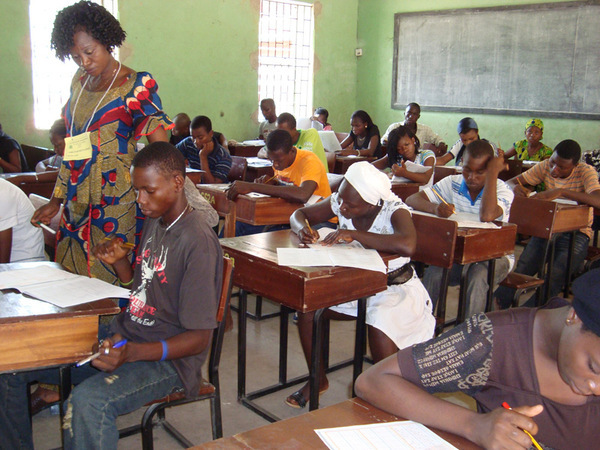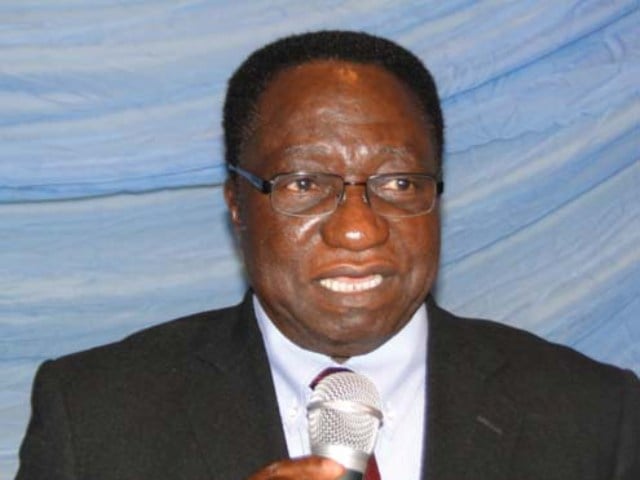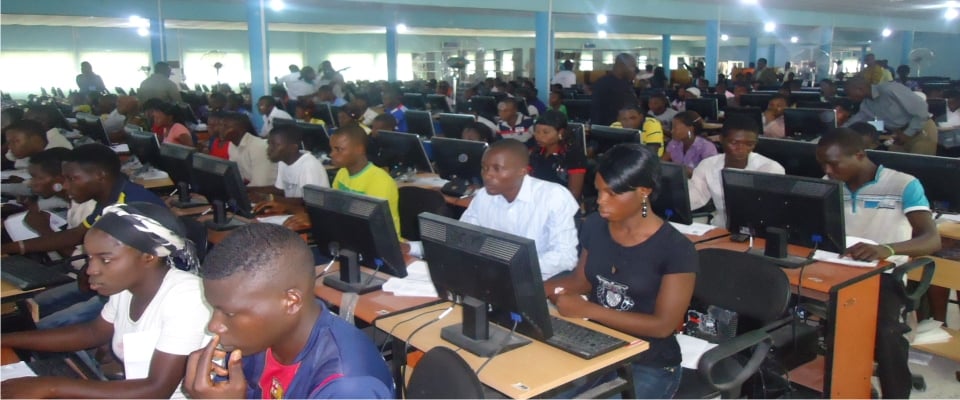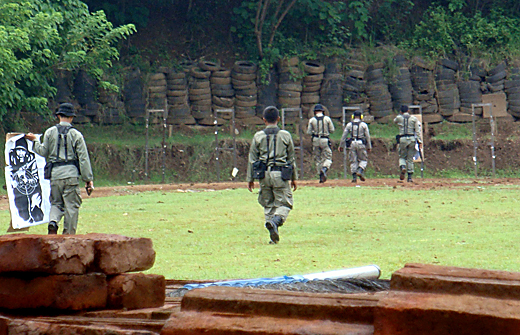On Monday, March 9, 2015, the Joint Admission Matriculation Board (JAMB) imprinted a landmark in its 37-year history by beginning the first total Computer-Based Test (CBT).
Though CBT was introduced in 2013, it was not made compulsory. In the past, candidates wrote the Unified Tertiary Matriculation Examination (UTME) using the Paper-Pencil Test (PPT).
But in 2015, all the 1.47 million candidates, including inmates and the visually impaired, would take the exams via CBT.
PRE-JAMB YEARS
As at 1976, there were 13 universities in the country and these citadels of learning conducted varying concessional entrance examinations with no particular structure in place. This meant that a candidate could sit for the examination of all the universities if the time and resources permitted.
Advertisement
Moved by the uncoordinated system, the committee of vice-chancellors clamoured for a unified body to supervise pre-varsity examination and this led to the birth of JAMB in 1977.
PAPER-PENCIL MALPRACTICE HISTORY

After its establishment, the body successfully coordinated University Matriculation Examination (UME), Polytechnic/Colleges of Education Matriculation Examination (PCE) for more than 30 years. However, the examinations were merged in 2010 and the board began administering the Unified Tertiary Matriculation Emergency (UTME).
Since inception, one of JAMB’s most recalcitrant challenges has been examination malpractice, and it has led to frequent cancellation of results.
Advertisement
As the number of candidates continued to spiral, the applicants began to outweigh resources, resulting in the evolution of “special centres”. This era witnessed a trend highlighted by pupils travelling to remote areas to write exams under little or no supervision.
Some got answers before examination and many also came to the examination centres with ‘chips’. Others paid their way through. Some candidates who scored as high as 300 of 400 in the examination found it difficult to survive in top class universities, thus eroding public confidence in the board.
At the peak of the distrust in 2005, Chinwe Obaji, minister of education at the time, introduced the post-UME examination for a second testing of pupils who had passed the UME or PCE.
In a way, this defeated the essence of establishing the body in the first place, as universities literally returned to the pre-JAMB years.
Advertisement
OJERINDE’S ELECTRONIC DAYS

Dibu Ojerinde, the current registrar of JAMB, assumed office in 2007 and after studying the system for six years, he introduced CBT in a bid to curb malpractice.
“We discovered that exam malpractice in computer-based test is so negligible that we don’t have to bother about it,” he said at a recent press conference in Abuja.
“We have been practising it. We started in 2013 and in 2014, we practised with about 617 candidates and we have decided to go into it full-blown because that is the answer to examination malpractice.”
Ojerinde is aware of the attendant issues that could arise as a result of the innovation.
Advertisement
“We got some information as regards errors and now we have corrected those errors,” he said.
“We are bound to have problems in any new enterprise and we will provide solutions. In the past six, seven years, we have been preaching that there will be CBT. Our children are ready because they are digital while parents are analogue.”
Advertisement
He added that JAMB had set up about 400 test centres capable of taking an average of 250 applicants at one sitting. This translates to 100,000 pupils at one sitting, meaning that the examination for all the candidates would only have to hold 15 times across all the centres.
THE HICCUPS
A random survey conducted by TheCable revealed that more than 60 percent of those sitting for the examination are unfavourably disposed to the total use of CBT. This is actually obvious with the wave of numerous protests across the nation.
Advertisement
Applicants filed out on the streets of Port Harcourt, Ibadan, Jos. Shots had to be even fired in some instances and some of the candidates were arrested in Benue state.
Though the protest is basically driven by the fear of most of these applicants for CBT, they are hinging it on the inability to access e-slips, without which a candidate cannot register for the exam. This is one big challenge JAMB has to surmount.
Advertisement
Power supply and internet availability are also areas that, if poorly managed, could disrupt the entire process. But the board has assured the candidates that all the examination centres have been equipped with appropriate power back-ups and necessary bandwidth for quick communication.
Another challenge is the potential hacking of the board’s database to access the questions before the examination. But Ojerinde has said that the board has done its homework very well and its database is impenetrable to hackers.
HOW PREPARED?
If JAMB can solve the problems emanating from e-slips and protests across the country, then the board can be said to be truly prepared for not just the first CBT UTME in the country’s history but subsequent ones as well.
Add a comment






